This is one in a series of posts on the Fujifilm GFX 100. You should be able to find all the posts about that camera in the Category List on the right sidebar, below the Articles widget. There’s a drop-down menu there that you can use to get to all the posts in this series; just look for “GFX 100”.
I’ve tested the GFX 100’s IBIS performance with the 110 mm f/2 lens here and here. The 110 is probably the native G lens that needs IBIS the most, since the 120 macro, the 100-200 zoom, and the 250/4 are all optically stabilized. There has been some interest in how the IBIS does with shorter focal lengths. I decided to use the 32-64 mm f/4 zoom to find out. I set it to 44 mm for this test, which is approximately equivalent to the 35 mm lens I used on the a7RIV in yesterday’s test. I set the aperture to f/5.6, which is also approximately equivalent to the f/4 used in the previous test, but that’s not why I chose those apertures: they are the about sharpest ones for each lens. I stood for this series, leaning against a railing behind me, which provided some extra steadiness.
Here’s the test scene, with the low-contrast slanted edge target centered:
Here are the details of the test conditions:
- AF-C
- Medium spot, centered
- Continuous low drive mode
- EFCS
- Lossless compressed Raw
- ISO 400
- f/5.6
- Exposure mode A, center weighting
- 77 mm Heliopan variable neutral density filter
With IBIS on, set the filter to low attenuation, which gave me a shutter speed of about 1/1600 second. I made about 25 continuous-drive exposures, turned the filter down about a stop, and did it again. I kept on doing that until about 1/10 second, then turned IBIS off and ran the series again, this time stopping at 1/25 second (no point in being silly about this).
I ended up with about 400 images. I developed them in Lightroom, with default settings except for the following:
- White balance to gray below horizontal slanted edge
- Adobe monochrome profile
- Sharpening turned off
- Noise reduction turned off
Using my automatic registration program, I adjusted the cropping in Lightroom for each image so that they were centered. I computed the MTF50 — a proxy for sharpness — for all the images with Imatest with the region of interest being a horizontal edge. Imatest spit out the data in cycles per pixel. With Matlab code that I’ve written, I converted that to cycles per picture height. For the statistics calculations, I removed outliers, which I defined as points more than two standard deviations away from the mean after conversion of the MTF50 samples with a logarithmic nonlinearity.
Performance is acceptable even at 1/5 second, although there are a some poor outliers there. By accident, I ran a duplicate test that included all but the slowest shutter speeds. When that data is included, things don’t change much:
The lack of any significant differences means that I can stick with 25ish shots in future IBIS testing.
With IBIS off:
1/25 is acceptable on average, but there are a lot of unsharp shots at that shutter speed.
Comparing IBIS with no IBIS:
Interpolating, the mean IBIS results at 1/5 second look about as good as the non-IBIS mean at 1/35. That’s a ratio of 7, or just under 3 stops. If we look at the mean-minus-sigma numbers, to get the 1/5 second IBIS sharpness, you’d need to use a shutter speed of about 1/40 second, which is close to the same ratio.
Here’s a comparison with yesterday’s test of the Zony 35/1.4 on the a7RIV:
Testing note: at 1/5 second, finder blackout in the GFX 100 makes it really hard to keep the target centered.
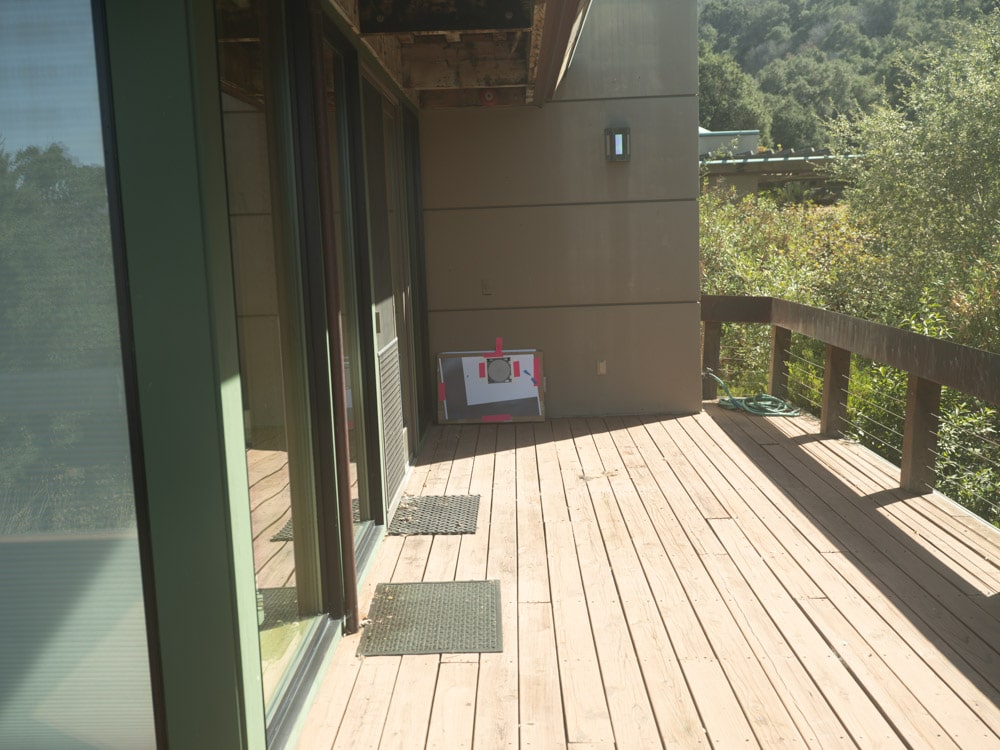
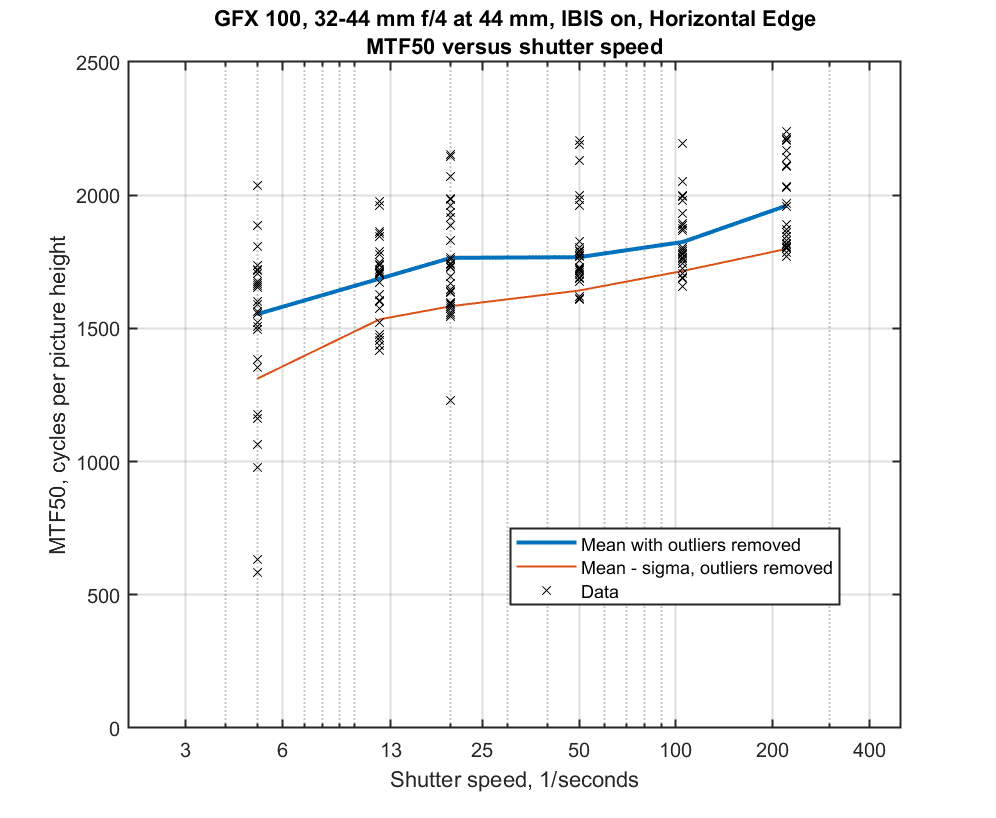
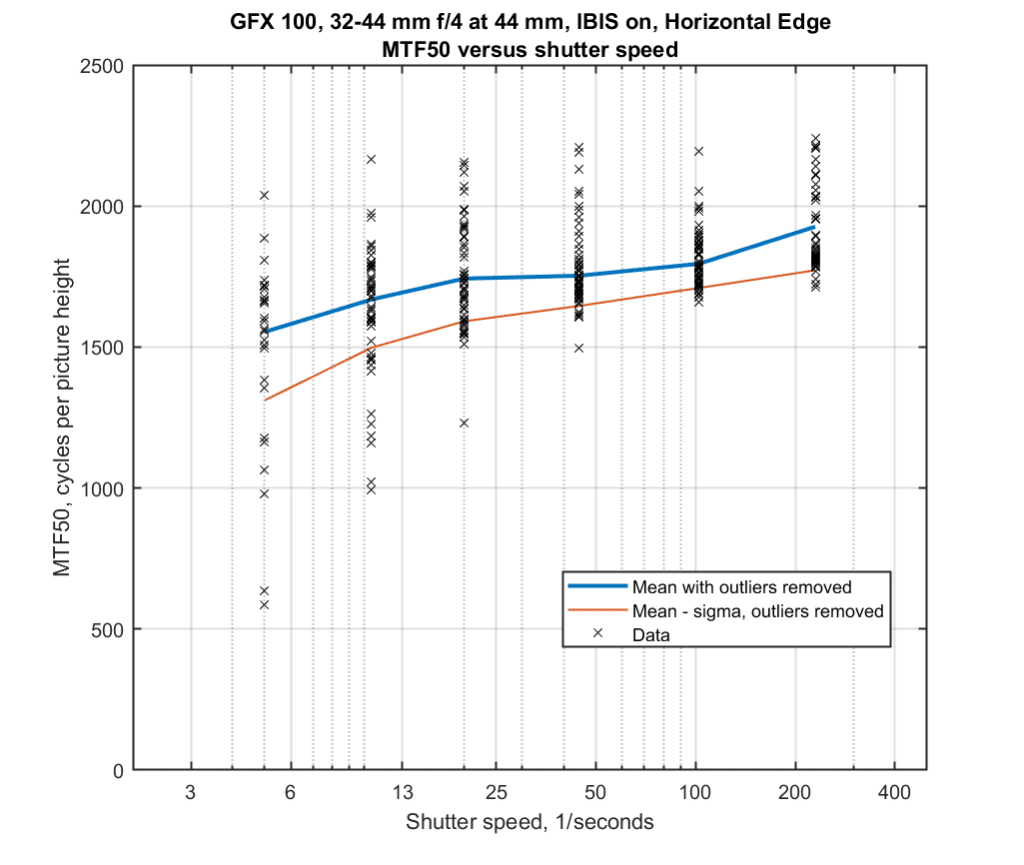
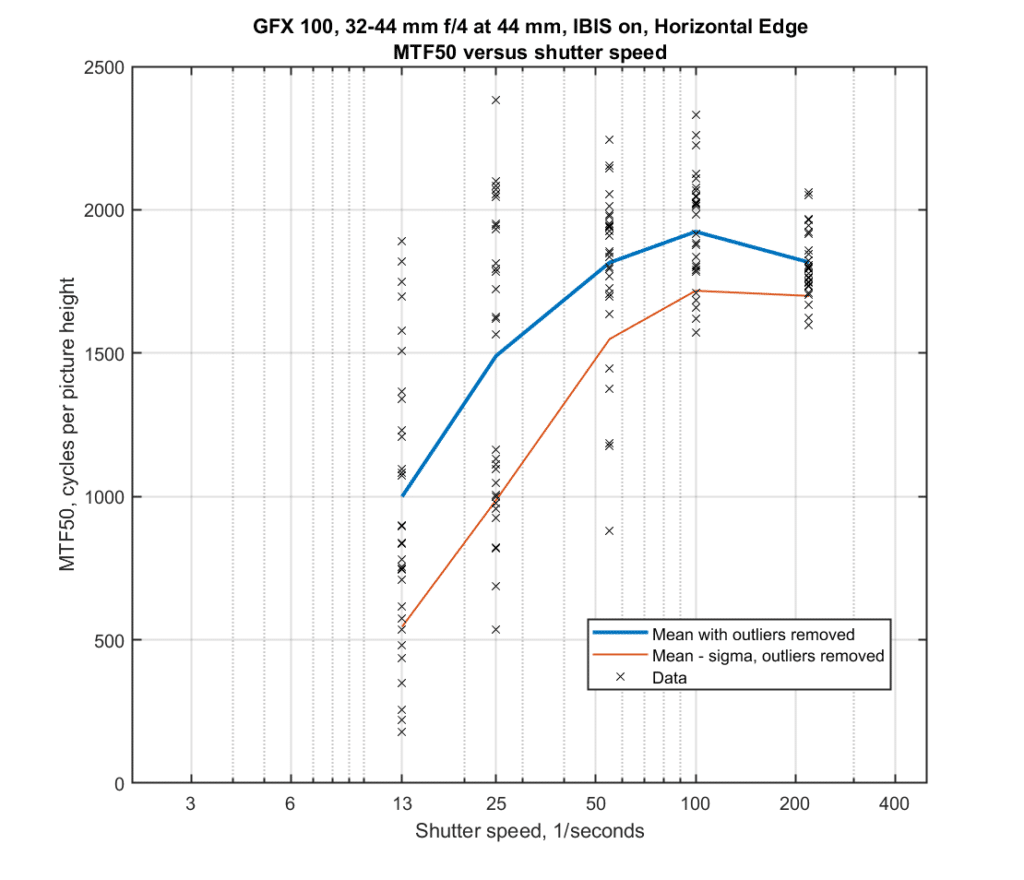
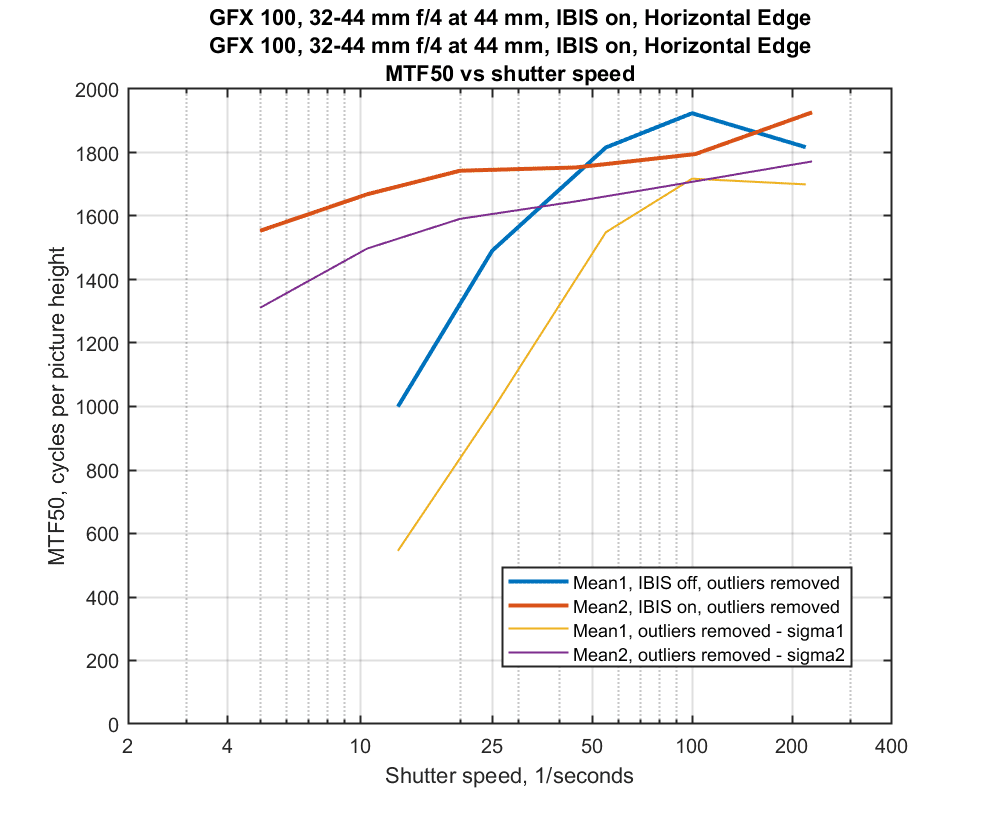
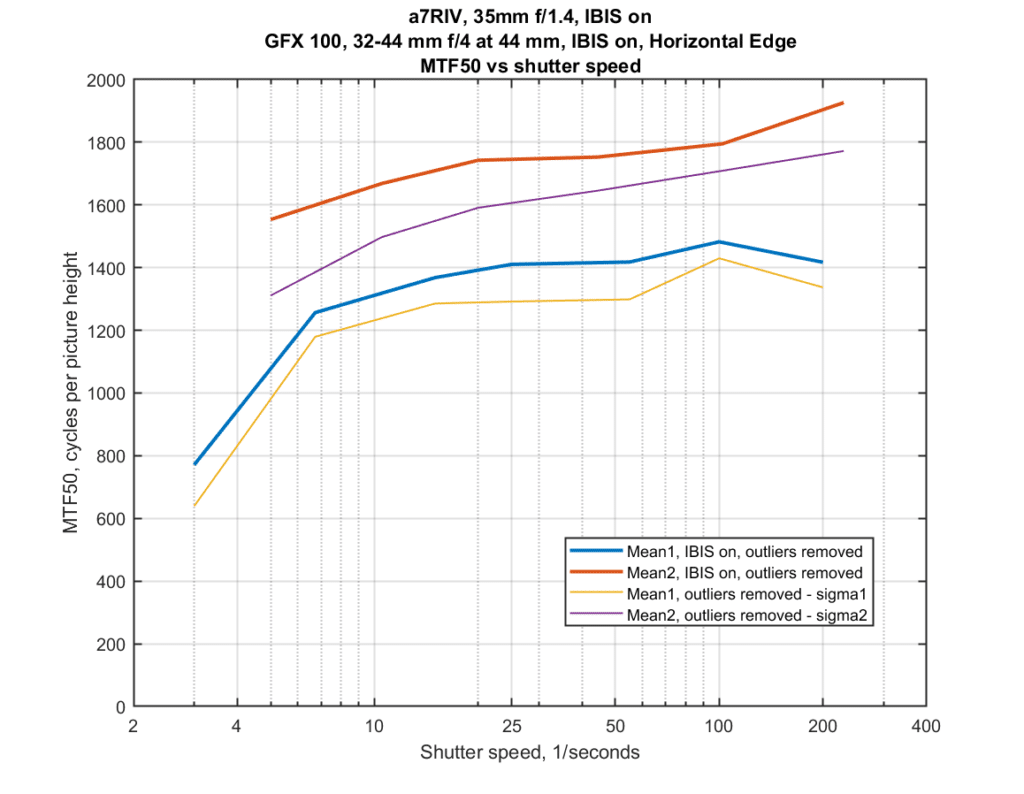
jim Trotter says
when using a tripod with the GFX should the IBIS be turned off ?
JimK says
Unless the tripod is unsteady and the exposure is short, yes.